On a summer tour supporting his Time Clocks album, Joe Bonamassa unveils some new 6-strings and old favorites, and plays through what’s arguably the most covetable collection of onstage tube amps ever assembled.
After moving back to New York City, Joe Bonamassa spent some lockdown time in Germano Studios in Manhattan’s NoHo neighborhood, tightly winding the music for his latest album, Time Clocks. His longtime producer Joe Shirley had to work with the powerhouse guitarist remotely, from his home in Australia. Yet the result is as seamlessly Bonamassa as ever, with riveting guitar work that has echoes ranging from Africa to Led Zeppelin. “My ADD transcends into my musical life,” the other JB told longtime Premier Guitar contributor Joe Charupakorn in our December feature. “It’s a very different record for me. It’s not a blues record, for sure. I just try to make records that don’t bore me all the way through—we’ve got this groove covered, we’ve got that groove covered, let’s put a sorbet in, something out of left field.”
They don’t serve sorbet at Nashville’s hallowed Ryman Auditorium music hall—although I’m putting that in their suggestion box. But Bonamassa did dish out plenty of guitar flambé at his August 2 headliner there. And melded the music of Time Clocks with a selection of some of his favorite classic and original blues. PG’s JB—that’s me—connected with Joe onstage before the show, where I also did a Rig Rundown with that other guy with my initials in 2018.
This time, there were some new members of Bonamassa’s ever-growing-and-shrinking collection of gear—which he spoke about at length earlier this year with Cory Wong on the rhythm guitar kingpin’s Wong Notes podcast for PG—pressed into service, including some recent-arrival Les Pauls, of course, and perhaps the most covetable collection of historic badass amps ever played on the Ryman stage. But rareness, novelty, or familiarity isn’t what determines which toys come out to play. Bonamassa starts by building a rough set list, and then chooses the right instrument and amps for each song. So, watch, look, and listen!
Brought to you by D’Addario XPND Pedalboard.
High-Flying “B”
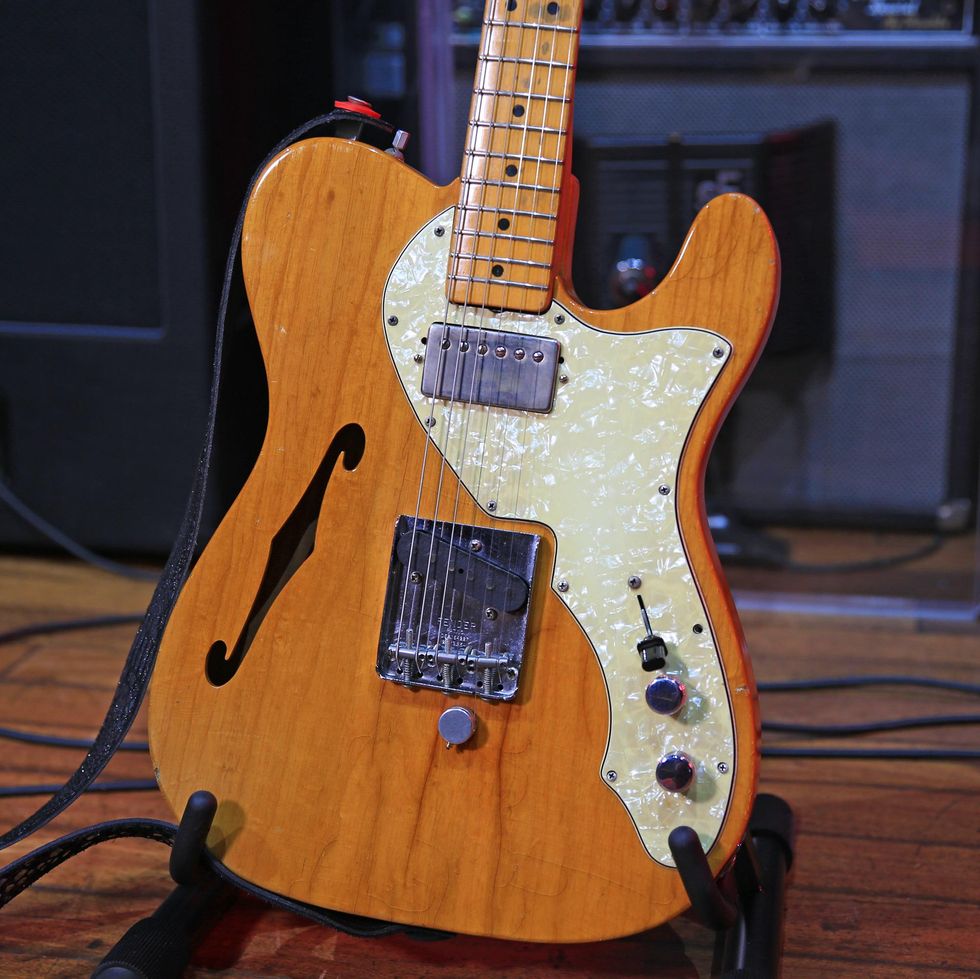
Joe’s 1968 Fender Telecaster Thinline has a B-bender and a Seymour Duncan the Bludgeon pickup set. The new pickup outfit is patterned after the distinctive sounding ones in JB’s ’51 Nocaster and are going into production soon. The maestro strings most of his electrics with Ernie Ball .011 to .052 sets.
Ol’ ’55
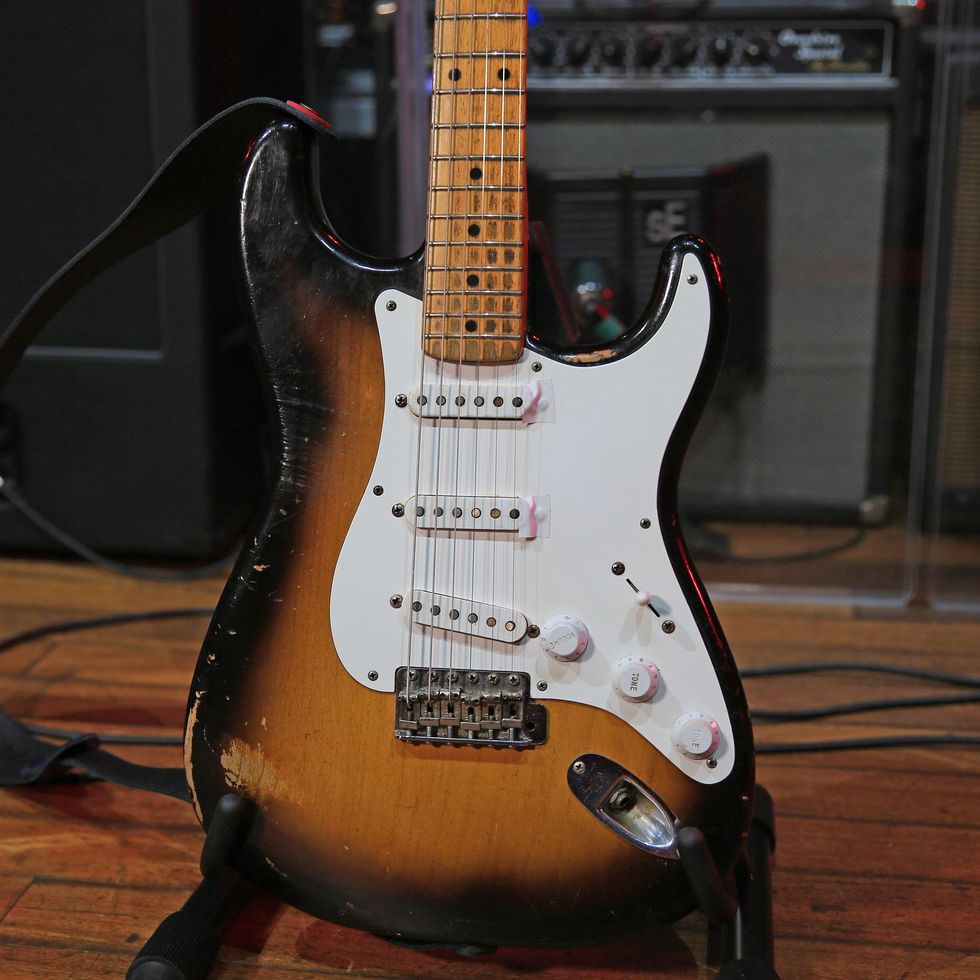
Here’s another 1955 Strat in the fleet, joining the hardtail the JB’s named “the Best.” He keeps this one tuned to D and it's stringed with a slightly heavier gauge of Ernie Balls: .011 to .056.
A Bonnie Strat
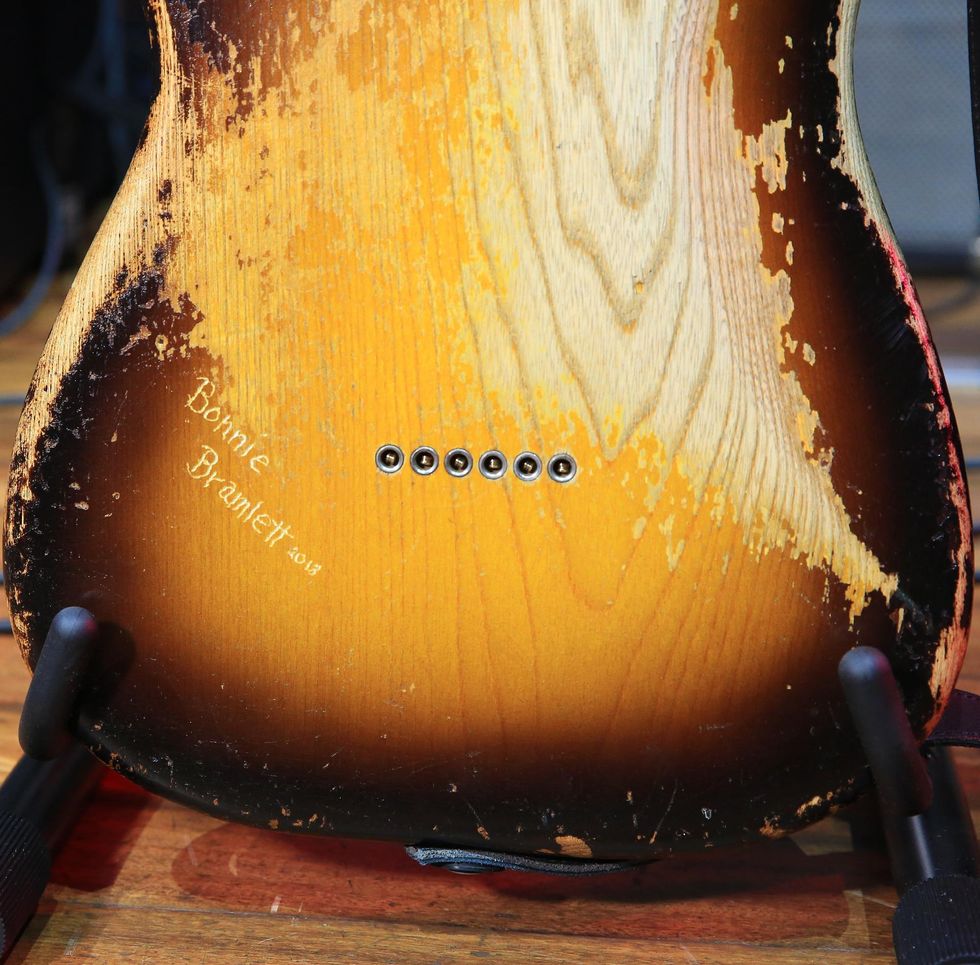
That ain’t vandalism. It’s love and friendship. Joe asked his friend Bonnie Bramlett, the vocalist who made rock and roots history as half of the famed duo Delaney and Bonnie, to engrave her name on this 1955 Fender Stratocaster—which is now known as “Bonnie.”
About Face, ’55
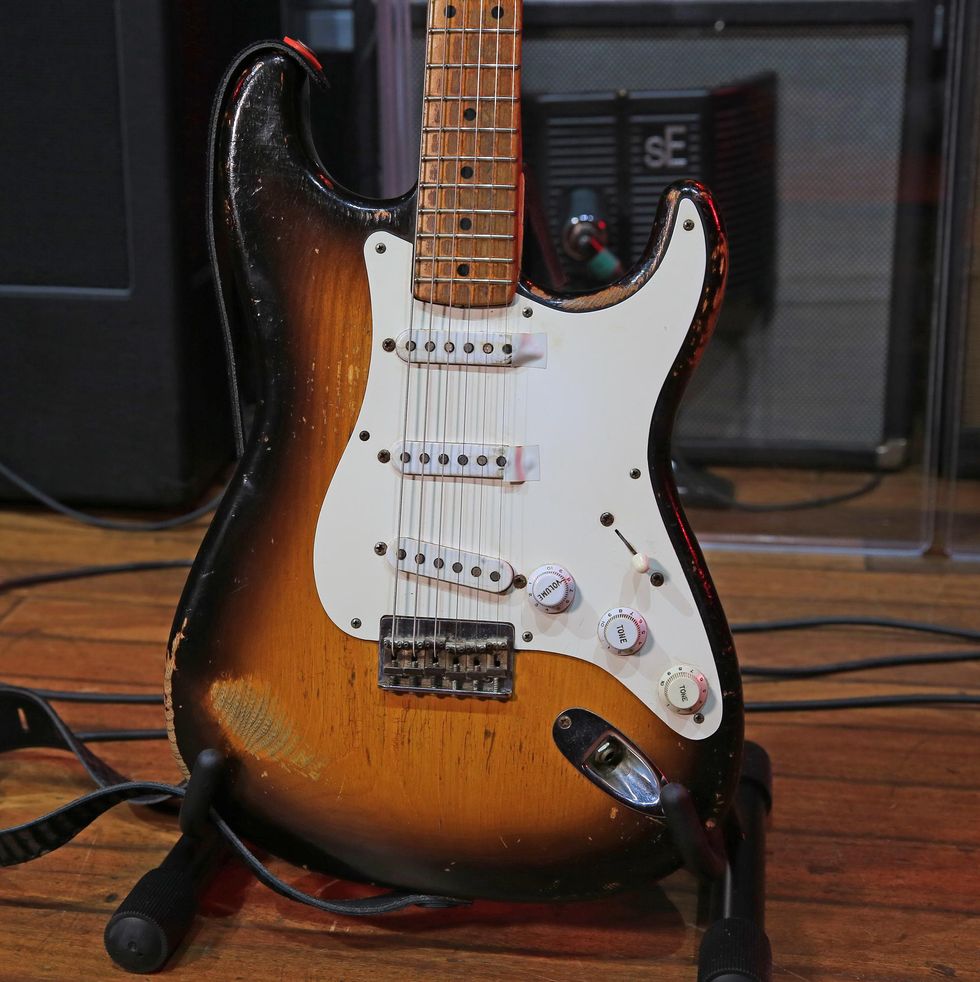
Here’s the front side of the “Bonnie” Strat.
Les Paul for Sale
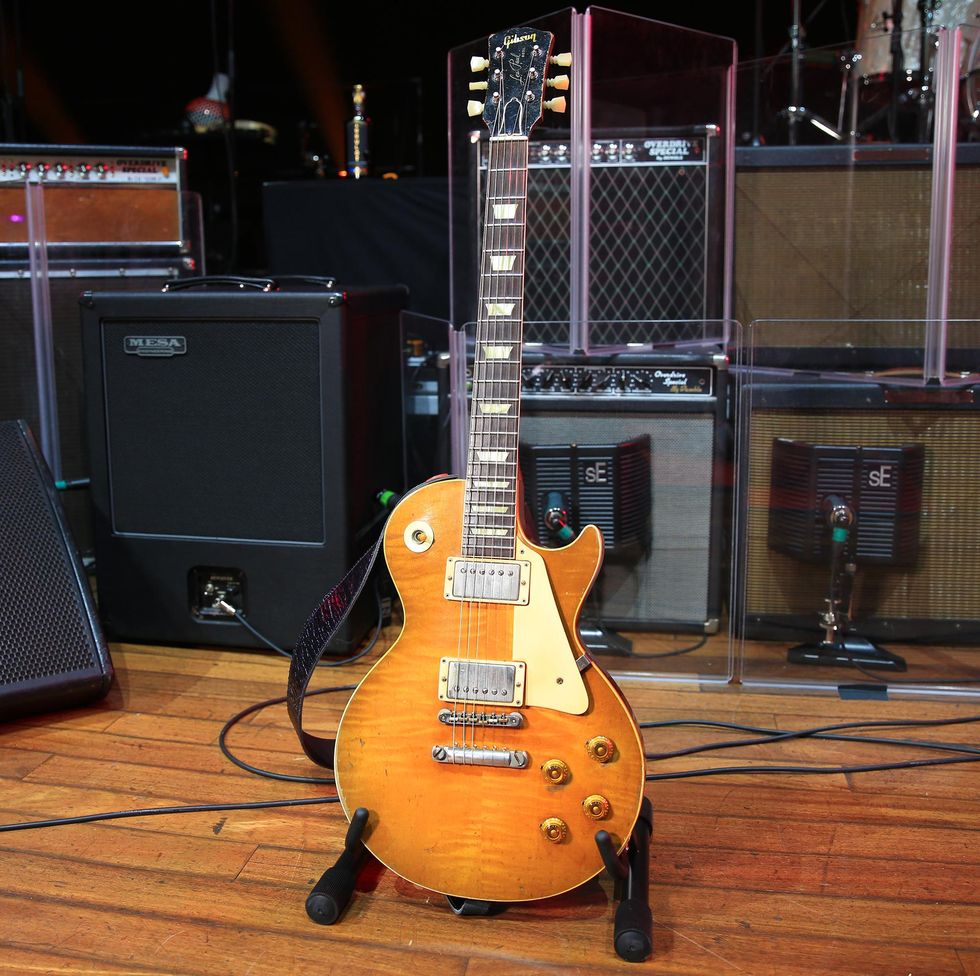
JB was asked to play this 1960 Gibson Les Paul Standard on tour until it is auctioned off for charity. The auction has yet to be announced. And while ’58s and ’59s have long been consider the Holy Grail of Les Paul, anyone who’s heard Clapton’s tone on the so-called Beano album knows that ’60s are also the bomb. Coming up on the collectability scale: late ’60s Pauls. Don’t believe it? Play one!
A Great ’58

This 1958 Gibson Les Paul Standard is a recent purchase. At some point the original tuners were swapped out for Schallers, and that’s how Joe’s kept it.
The Les Paul Under the Stairs
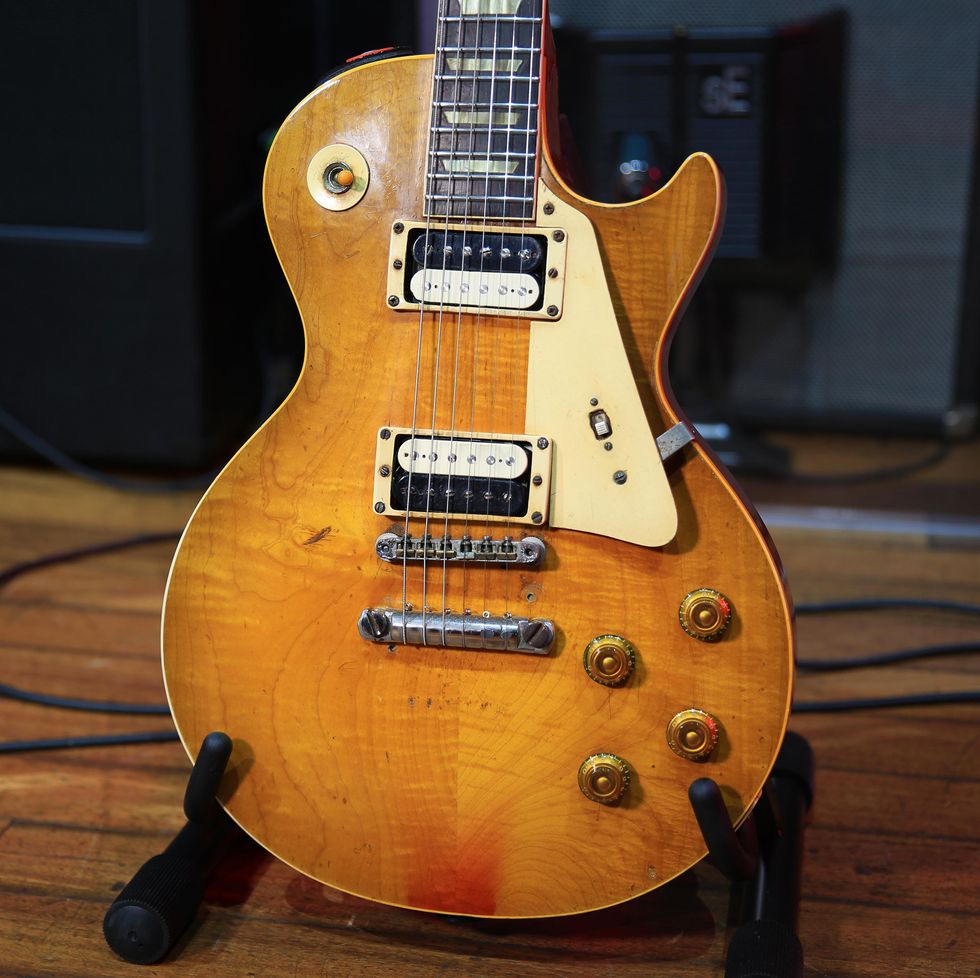
Dig this early 1960 Gibson Les Paul Standard, which Joe has named “Royal Albert.” It was recently found in an under-the-stairs cupboard in England. After a bit of work and the addition of some PAFs, it’s got a new life on tour.
For Another $20….
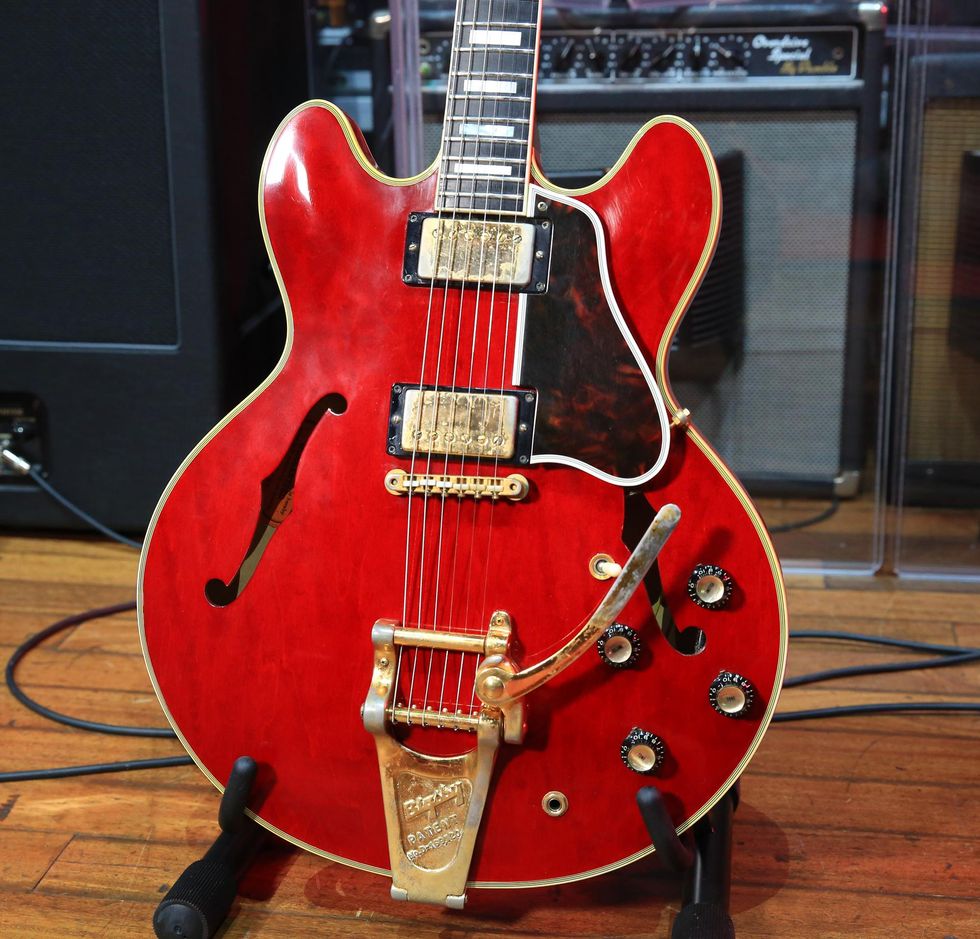
What’s the difference between Gibson’s ES-335 and ES-355? Back in the day, in practical terms, it was 20 bucks. But another difference is that the 355 and the 345 came in stereo-wired versions. And the optional Varitone circuitry—Gibson’s chicken-head-dial-controlled tone filter—for ES-355 models was typically standard. That makes this all-stock 1964 Gibson ES-355 very rare. There’s no Varitone and it came wired out of the factory in mono.
Bicentennial ’Bird
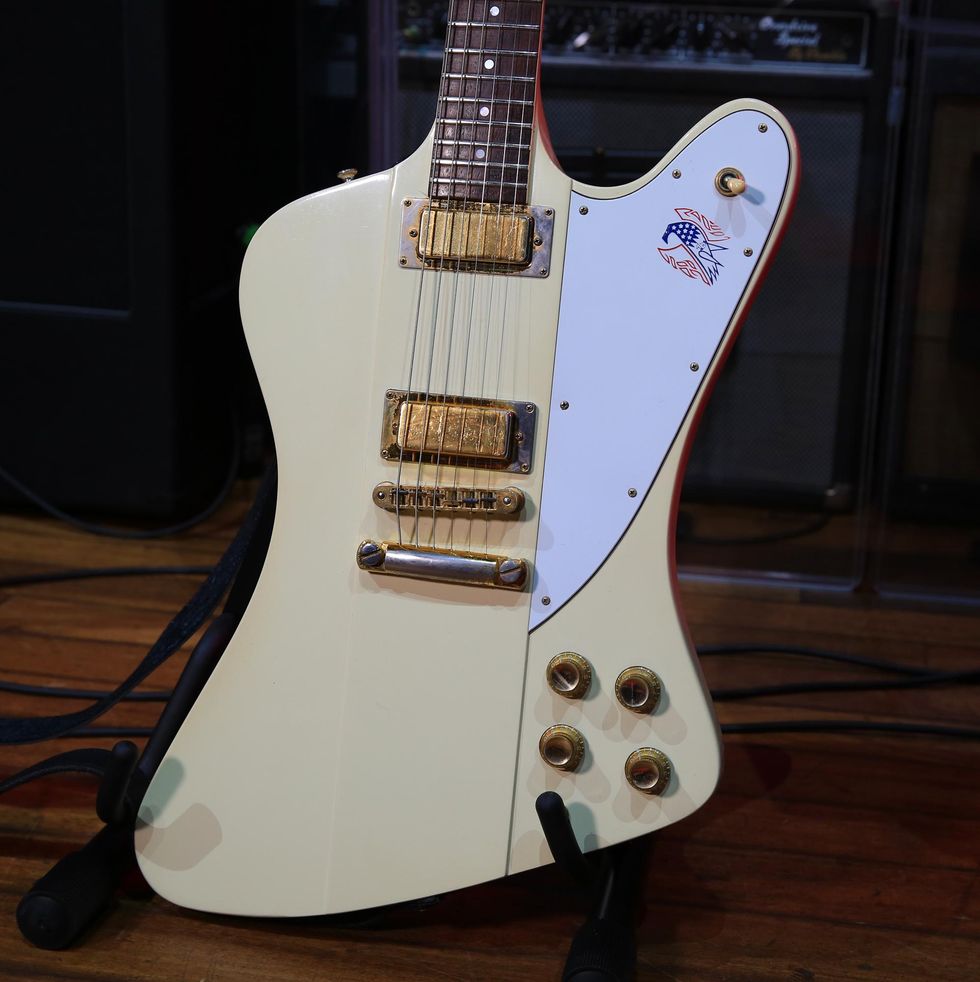
It ain’t no eagle, but this all-stock 1976 Gibson Firebird Bicentennial salutes in open G. They were only issued for three years and sell for $5,000 plus these days. Plus, this special run were all adorned with a white pickguard where a red-white-and-blue Firebird logo nests.
Amos the Imposter
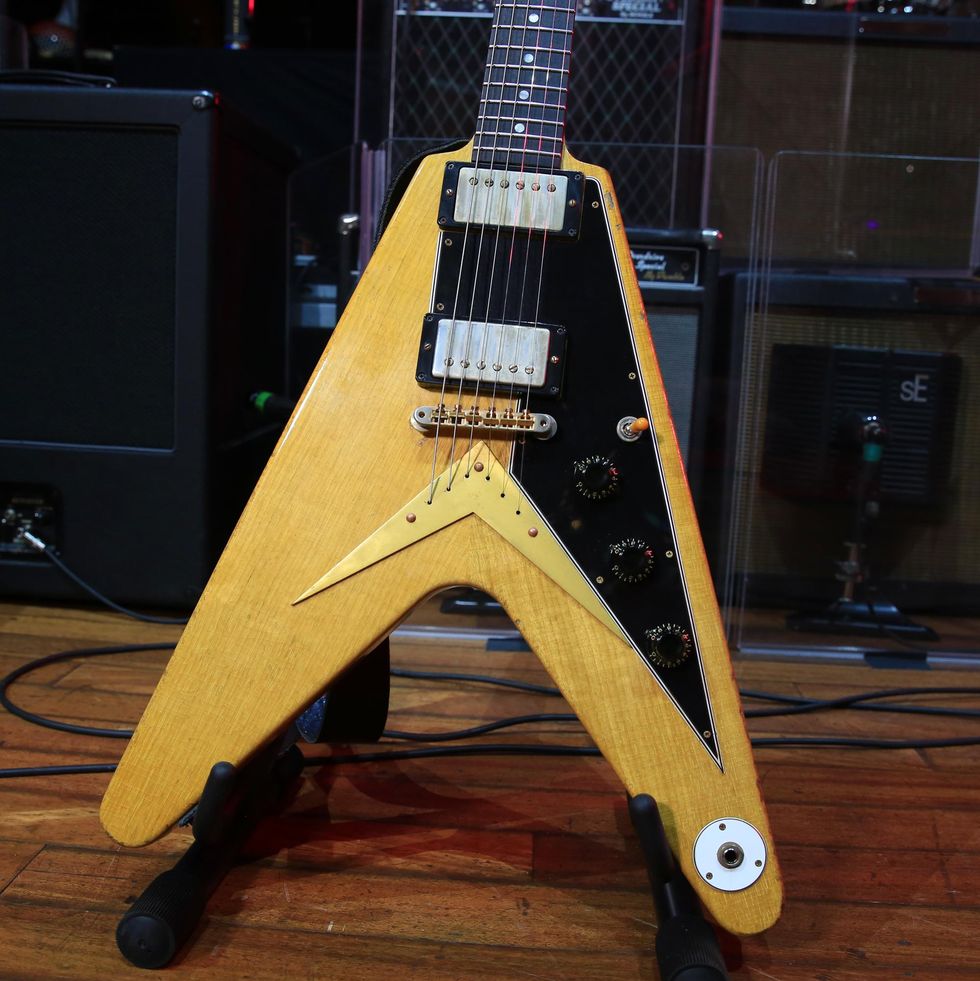
The Gibson Custom Shop provided Bonamassa this detailed replica of his remarkable, all-original 1958 Gibson Flying V. Check out the run Epiphone did on the historic V back in 2017.
Back in Black

This 1955—that year again!—Stratocaster may be the first black Fender Strat. It was formerly owned by Howard Reed, the guitarist who replaced Cliff Gallup in Gene Vincent and the Blue Caps. Back in 1988, an 11-year-old Joe had a poster of this very guitar on his bedroom wall, and now he owns it. For the past several years, this guitar has made JB’s annual trip to the Ryman and you can visit the black ’55 any time you enter the Mother Church.
Adventures in Ampland
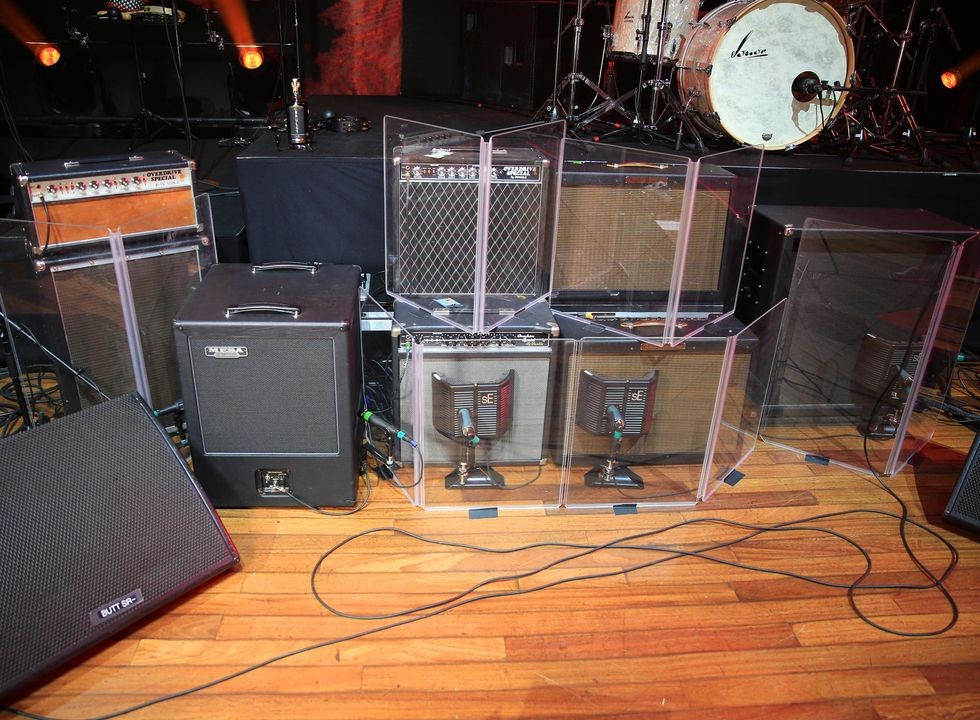
Seven amazing amps? Yeah, that should do it. And Joe combines them to recreate all the sterling tones on his albums. There’s a 1979 Dumble Overdrive Special running into a 2x12 Dumble Cab with JB-85 Celestions. The speakers are rated at 85 watts, natch, and 8 ohms, and are among the loudest speakers Celestion’s ever made. JB’s 2006 Dumble Overdrive Special combo blasts through the same-model speaker. There’s a Mesa/Boogie Revolver rotary speaker cabinet in the mix, too, with a single JB-85, and an ’84 Overdrive Special with the same. Two of his signature Fender Twin Reverbs figure in, and while these usually come in tweed, Joe had this pair tuxedo’d in black.
Four off the Floor
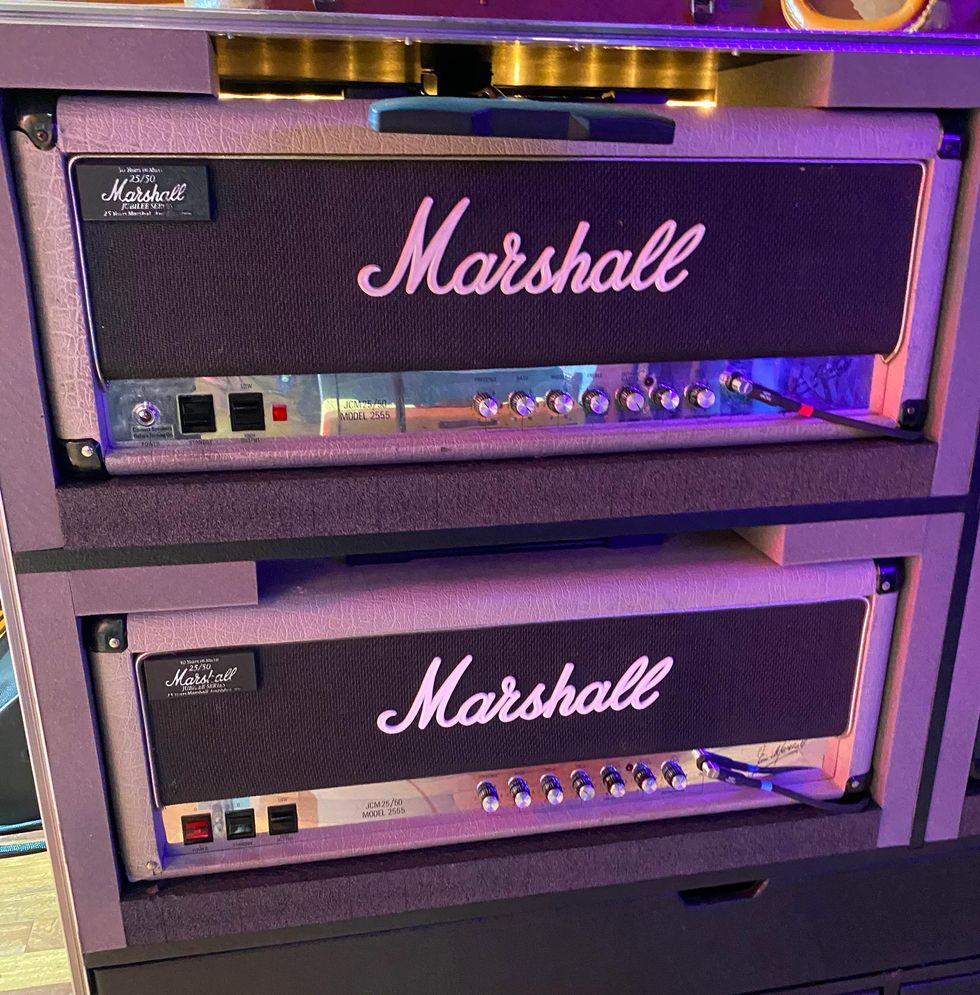
And if you’ve had trouble finding Marshall Silver Jubilee 100-watt heads lately, it might be because Bonamassa has four of them, running two at a time into a Van Weelden 4x12 cab, split internally to run as two 2x12s juiced with EVM12Ls.
More Marshalls
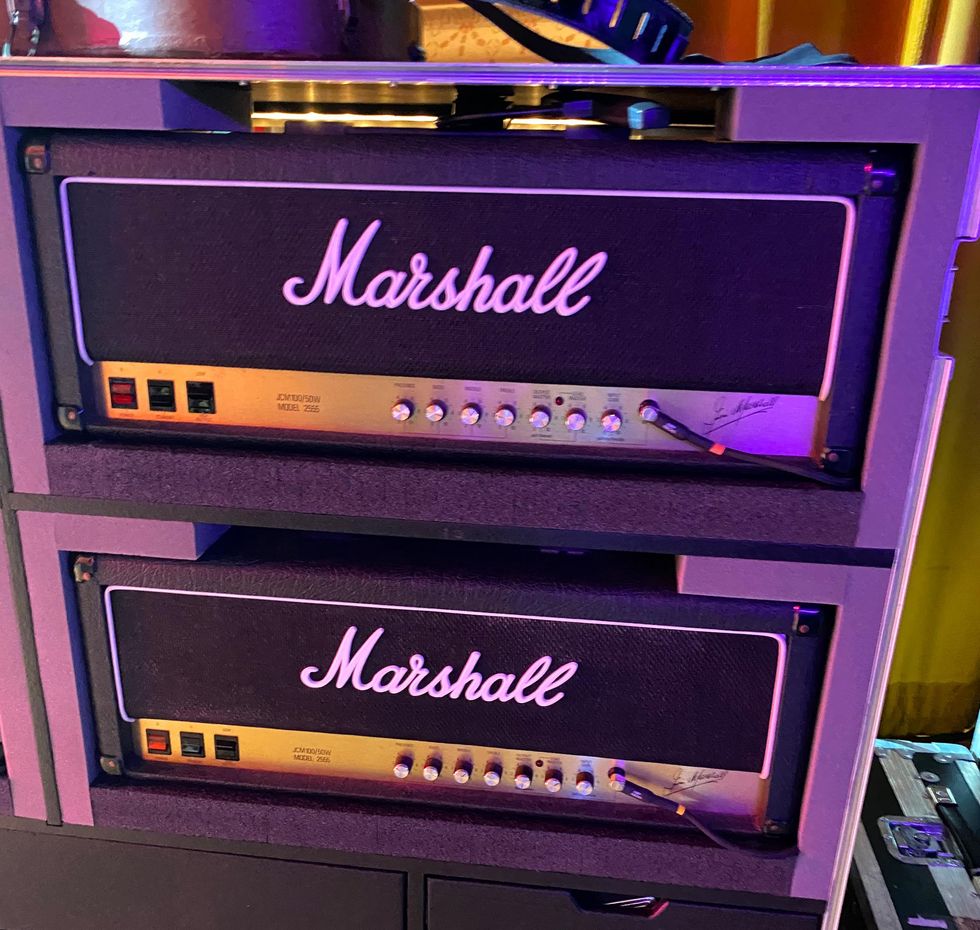
Joe Bonamassa’s Pedalboard
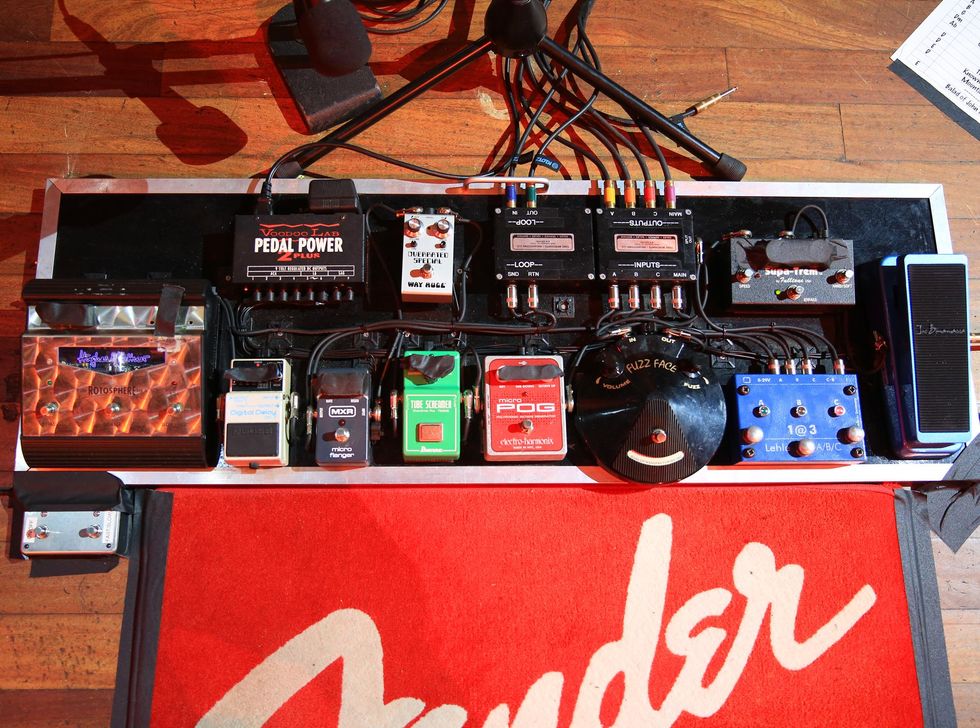
JB keeps a very orderly guitar pedalboard. It’s currently stocked with a Way Huge Overrated Special, a Tone Mechanics/Racksystems Loop Box, a Tone Mechanics/Racksystems Splitter, a Fulltone Supa-Trem, a Hughes & Kettner Rotosphere, a Boss DD-2 Digital Delay, an MXR Micro Flanger, an Ibanez TS808 Tube Screamer, an Electro-Harmonix Micro POG, a Dunlop Joe Bonamassa Fuzz Face, a Lehle A/B/C switcher, a Dunlop signature Cry Baby Wah in Pelham blue, and an on/off/fast/slow dual switch for the Mesa Boogie Revolver. Juice comes from a Voodoo Labs Pedal Power 2 Plus. Joe uses KLOTZ cables and custom Dunlop Jazz III picks.
![Rig Rundown: Joe Bonamassa [2022]](https://www.premierguitar.com/media-library/rig-rundown-joe-bonamassa.jpg?id=31202568&width=1200&height=675)



![Devon Eisenbarger [Katy Perry] Rig Rundown](https://www.premierguitar.com/media-library/youtube.jpg?id=61774583&width=1245&height=700&quality=70&coordinates=0%2C0%2C0%2C0)
























































